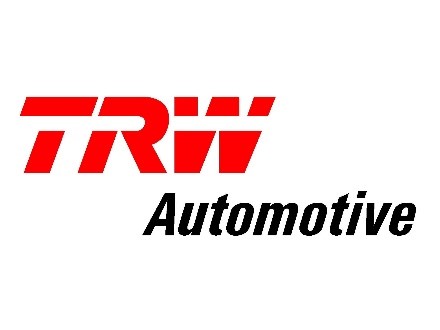“Though the loose standard of proof of preponderance of probability adopted by CCI so far has been repeatedly questioned in the appeals against penalty orders of CCI, two recentdecisions of closure of alleged bid rigging in railway supplies by acceptance of objective justifications by parties isa suresign of a maturing and evolving jurisprudence of the CCI towards Cartelization”
“Public procurement in India constitutes about 30% of the GDP, with the total annual expenditure of around 15-20 Lakh Crores and that for Union Government alone in the range of Rs. 2.5 – 3 Lakh Crores. This is the government activity most vulnerable to corruption, not only between the suppliers and the government staff but also within the suppliers themselves. The latter emerges in the form of cartels i.e. bid rigging and collusive bidding….cartelization in suppliers has been the norm in public procurement and is the root cause for corruption in procurement staff of which the latter is only a symptom. Unfortunately public procurement policy has so far been confined to the symptomatic treatment of the problem ignoring the root cause and is a case of apparent misplaced priorities…”.
Among the other forms of cartels, collusive tendering and bid rigging, particularly in government procurement, is one of the most prevalent forms, which has consistently been attracting attention of competition regulators throughout the World. For instance, till 1993, 70 per cent of the cartel cases investigated by the US Department of Justice (DoJ) involved bid rigging rather than price fixing and cases of bid rigging in government procurement were the largest in number. For this reason, much of the evidence on effects of cartels on economy concentrates on bid rigging. The available evidence suggests that in general, bid rigging cartels lead to prices well in excess of 10 per cent and sometimes in excess of 20 per cent, of competitive levels. It is for this good reason that almost all competition laws around the world characterize price-fixing and market-sharing agreements, such as in bid rigging cases, as “object” infringements or per-se infringements. Consequently, the highest fines are reserved for entities found to be engaged in bid rigging cartels.
The Competition Commission of India (CCI) has also come heavily on bid rigging cartels and has imposed exemplary penalties on parties involved in bid rigging cartels in government procurement. Although the level of punishment prescribed for cartels in India (considered as a civil offence in India) , which at maximum of 10 per cent of the average turnover for the last three years is at par with the punishment prescribed in other developed economies (except for criminal sanctions including imprisonment terms for cartel members in some countries such as United States) but in the alternate also provides for penalties upto maximum of three times of the profit earned for the whole duration of the cartel ,whichever is higher . But even such higher penalties have not been a sufficient deterrent for cartelization so far considering the growing number of cases being reported to CCI. Let us quickly look into the possible reasons.
Whether an industry can become cartelized or not depends upon, apart from common factors, such as market concentration or limited number of producers, high and inelastic demand, absence of substitute products, on how great the incentives are for the firms in the industry to form a cartel and how sustainable the cartel is likely to be. The incentives to create a cartel depend on the difference between the profitability of the firms in the presence of a cartel and in the absence of a cartel. A sustainability of a cartel, in turn, depends two factors (a) whether the incentives of the firms to cheat on the cartel agreement outweigh the likelihood of the cheating being detected and punished by either other cartel members and (b) reputation of a strong enforcement authority ensuring fast detection of cartel and inevitability of meeting with very harsh punishment prescribed in the law and whether there are precedents of success in such investigations with the help of expert antitrust attorneys / legal advice. At the same time, the supply side responses by non-cartel members can undermine the cartel especially where the entry in a market is easy or it is easy for non-cartel members of the industry to expand their output in response to the cartel members raising their prices, making the cartel no longer sustainable. In this way the supply side responses by non cartel members can neutralize a cartel which can also be described as “the response of the market forces.”
How does competition regulator prove the existence of bid-rigging cartels?
Cartels are secret agreements among competitors fixing prices, allocating markets or rigging tenders (bids). The most important part of a cartel case is simply proving that such an agreement existed. But since cartels are executed in secrecy, getting direct evidence of a cartel is most difficult. Direct evidence of collusive agreements which can identify a meeting or communication between the participants and describe the substance of such agreement are just not available even in advanced jurisdictions and therefore, reliance is placed on circumstantial evidence. Cartel cases in which there is no direct evidence of agreement often begin a familiar way i.e. suspicious parallel pricing that is not readily explained. But mere parallel pricing by itself is not sufficient and the competition authorities look for certain “plus factors” such as minutes of attendance in meetings of trade associations, preferably showing discussion on future price/ business strategies, homogenous products, predictable and frequent demands and limited number of suppliers, exchange of information on capacity utilization etc. The so called plus factors by themselves are not conclusive of the collusive understanding between participants and each case requires an economic analysis of the market structure which may sometime also be an indication of competitive pressures due to stringent buyer requirements giving a false impression of coordination amongst market players.
However, since direct evidence of bid rigging or evidence showing agreement amongst bidders prior to submission of bids are most difficult, till now CCI has been convicting parties in most of the investigated bid rigging cases on the basis of the “preponderance of probability” theory (a legacy of the jurisprudence on departmental enquiry cases) based on identical rates quoted by parties in a tender despite located differently and having different cost structures ,without insisting on corroboration from independent sources etc.
In the last 6 years of enforcement, the Competition Commission of India (CCI) has created for itself a reputation of a strong and pro-active regulator by taking up suo -moto investigations, based mostly on references from government departments. It has successfully prosecuted cartel allegations in 33 cases of anti-competitive agreements, which included 12 cases of bid rigging cartels from public sector undertakings (including two cases transferred from erstwhile MRTPC). The cartel cases related to a wide spectrum of the economy covering diverse sectors such as Pharmaceutical, Energy (LPG domestic cylinders ) , Media (Film/cable distribution and exhibition) ,Travel & Tourism ( travel agents) , Infrastructure (cement) ,Food (food storage in FCI Godowns) , Health , Transport (Shipping , Civil aviation, Trucks) and recently Insurance sector . Noticeably, this list also includes an increasing number of cases of bid rigging in the Defensesector,related toprocurements by the Military Units, such as, bid rigging in DGS & D rates contracts for supply of jungle boots to the Armed Forces and recently, bid rigging in supply of CN Containers i.e. containers with disc required for 81mm bombs to the three Ordnance factories. Most recently, in a welcome trend ,for the first time CCI has penalized four PSU Insurance companies with Rs. 671 Crores for bid rigging the tenders for providing insurance cover for the social welfare schemes of the State of Kerala. Appeals have been filed or will be filed by the parties in almost all these cases. However, in a fairly transparent legal structure such challenges are a sign of developing jurisprudence.
Analysis of CCI Orders –
In this context, a trend has been observed from the orders of the CCI. While alleged cartel members have been exonerated in price-fixing and market sharing cases due to lack of evidence or justification offered by the alleged infringers, never in the first six years of the enforcement has a case of alleged bid-rigging been closed after detailed investigation under the Competition Act, 2002 without imposition of penalty, except for two recent cases discussed below.
| Allegation
|
No. of Orders in which penalties were imposed | Exoneration |
| Market Sharing/Limiting Production/Price-fixing | 33 | 21 |
| Big-rigging/Collusive Bidding | 12 | 2 (From MRTP ) |
A perusal of CCI orders in bid rigging cases during the last 6 years shows a hardening stance and quotation of identical rates by bidders despite different locations and different cost of production has been considered sufficient for conviction whether there exists any other corroboration or “Plus factor” in the form of pre-bid meetings, active industry association etc. or not. But recently , a contrast is noticeable in two orders of CCI both involving allegations of bid rigging in supplies of products to the production units of Indian Railways by similar parties, which seems to indicate a re- thinking in the minds of the regulator on its earlier stand .
For instance, the penalty imposed by CCI in February, 2014 on three manufacturers of “feed-valves” i.e. spare parts for diesel locomotives quoting identical prices (matching up to two decimals) in response to one regular tender issued by Indian Railways was based on the conclusion that the quotation of identical prices by the manufacturers despite having been located at different geographical locations and having different cost of production …….Is sufficient to establish cartelization, without any direct evidence of collusion. As aforesaid, this case showed a hardened stance towards bid rigging cartels by the CCI.
THE CASE AGAINST DISK BRAKE SUPPLIERS TO INDIAN RAILWAYS
On the other hand, in complete contrast , in another case decided by CCI recently in September 2015, two (out of the three in the above case) manufacturers of disk brake system, supplied to the Rail Coach Factory, Kapurthala (Punjab), who quoted the identical prices (matching up to two decimals) in response to THREE emergency purchase tenders issued by Indian Railways , were exonerated from the allegation of bid rigging in spite of the Director General finding evidence of bid rigging by the two parties after a detailed investigation. Noticeably, the two manufacturers are the only two approved suppliers of disc brake system and a genuine competition between them would have brought the prices down for the product. Clearly, CCI ignored its own yardstick of the evidence of similarity of prices despite different geographical locations and the strong degree of probability which such exact similarity of prices in three successive tenders throws open. As regards the other factor often considered by CCI in the previous cases, whether their costs of production were similar or not, CCI has also accepted the defiance of the parties against non-disclosure of cost breakup in the post tender scrutiny to the Railways. Further due to a legal lacunae, no appeal can be filed against this order by the Railways.
Importantly, CCI while closing the allegations of cartelization in the above case noted that the procurement policies of the Railways have also contributed to the lack of competition between the suppliers in the present case (being only two suppliers) and has advised the Ministry of Railways to modify the said policies to incentivise the suppliers. It has also advised for a reassessment of the role of Research Design and Standard Organization (RDSO)so as to subserve the objectives of competition.
THE CASE AGAINST LEATHER UPHOLSTERY MANUFACTURERS
Similarly, in another case also decided recently in July 2015, the CCI has exonerated all the 5 firms from allegations of bid rigging. The reference was filed by the North Western Railway against 5 Firms, approved by RDSOfor supplying to “Fire Retardant Vinyl upholstery fabric leather confirming to RDSO specifications” the Railways. The case alleged that the firms had created a cartel among themselves so that only the largest of them , Responsive Industries Ltd., secured all the orders most of the time being the lowest bidder. It was also alleged that the rates quoted by the said firm were higher than those quoted by it in other railway zones and not competitive in nature and were exorbitant.
However, the DG after conducting a detailed investigation- noted that the prices quoted by the bidders were actually lower than the indicated price of upholstery determined by the Railway Board,thus dismissing the allegation of excessive prices being quoted by the bidders. CCI agreeing with the DG findings also found that Responsive Industries, against whom the primary allegations were made, was justified in quoting higher prices on account devaluation of Rupee and hike in petroleum prices which led to increase in manufacturing cost of the upholstery. The CCI took into account that the opposite parties had established that they were independent entities and even the I.P. addresses of computers from which bids were submitted were found to be distinct. No evidence of any collusion/ cartel was found amongst them which would have resulted in violation of the Act. Thus an objective justification provided by the main accused party was accepted by the CCI, showing a change in trend.
CONCLUSION:
The jurisprudence of CCI with respect of cartel and bid rigging is evolving. Though the above two recent decisions show a possible maturing of thinking on mere identical prices being sufficient to prove the allegation yet they are not the final words as CCI may change its stand depending upon any incriminating fact in a given case in future. In the face of the prevailing uncertainty, it may be advisable for the parties accused of cartelization to seek expert legal advice at the earliest opportunity to chart a successful defense.







